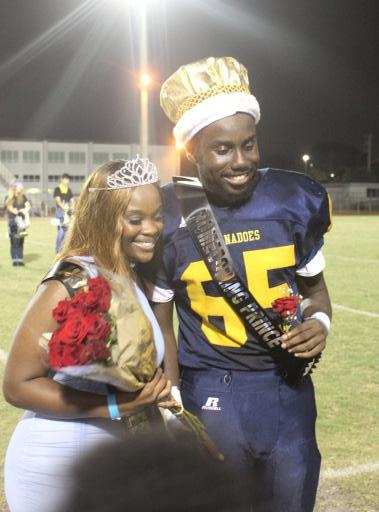
4 minute read
Around the world from home: Summit connects 15 countries
Around the world from home
Summit connects 15 countries
Advertisement
By Eduardo Andrade, Editor-in-Chief
This year’s biennial International Summit, held virtually Feb. 1-5, was the largest in school history, with 15 countries and 139 international students participating in the event. However, the magnitude of this event struggled to get through to students despite its historic nature.
“When you’re live, even 150 people can make it feel like the school size doubled, but on Teams, even though we had significantly more people it just shows up as a little number 200 or whatever, and you really don’t get the sense of, ‘there’s a lot of people here,’” senior Jeffrey Drew said. Drew served as both country leader, an intermediary between country ambassadors and administration, and as a co-leader with Cadre #9. “So I guess yeah, more people, more representation, but it felt a little bit downsized.”
While the summit did feel smaller, this helped some students recover part of the personal connection lost over virtual meetings.
“It was completely different since we couldn’t connect as well with the students; however, I learned a lot from them and I hope they feel the same way,” junior Ashley Oliveira Andrade said. Andrade was a country ambassador for Zimbabwe. “Just like last time, I made a lot of friends from all over the world and I’m very glad we had the summit this year. I thought I wasn’t going to be able to create new friendships, which wasn’t the case.”
This sentiment was largely reflected by the international guests, with 61% of international students reporting that the cadre groups were their favorite event, according to a survey conducted by administration Feb. 5-6
“I will never forget-- the Cadre meeting,” Princess Narh said. “I got to meet new people and learn about their backgrounds and also change some contacts if we wanted to stay in touch.”
By meeting with the same group every day during the summit, participants found it easier to connect with each other, as Fifteen students meet on Teams for their daily cadre meeting, where they had time to talk to students from almost every country participating. The biennial International Summit was held virtually from Feb. 1-5 as the COVID-19 pandemic has affected schools around the world.
PHOTO COURTESY OF ANN WAYLAND COOK

opposed to in-person summits where it can be easy to meet new people but difficult to stay in touch with them.
“The first day (the conversation) was scripted, so it was quite fake on the whole,” Drew said. “Afterwards it became more natural. Some of the kids were much more willing and much more comfortable speaking and chiming in during group discussions.”
Perhaps the biggest thing that the virtual summit could not compensate for was the loss of unstructured time where students who were not country ambassadors or cadre leaders could meet and talk to the international guests.
“The videos were cool, but ... I didn’t have that many opportunities to interact,” senior James Hurst said. “I felt like I couldn’t just be like, ‘Hey, you over there in the bottom right of my screen, what’s your deal?’ I just wasn’t able to seriously talk to them like I would if I was in person.”
Last-minute planning
After initially announcing in June that the summit would be canceled due to the COVID-19 pandemic, the school decided in August to host the summit virtually, and by early September it had sent out invitations to participating schools.
“If we were to just cancel, then we’re like, ‘Okay, well, we don’t know what it’s going to be like next year, we don’t know if we’re going to be able to postpone the following year,’” assistant principal Jill Samaroo said. “And then what? Then it’s how many years before, since we’ve had one. We don’t want to lose those relationships that we’ve already formed, we don’t want to lose (students) even knowing what a summit is because if we don’t have host families then we don’t have a summit... We didn’t want to lose momentum and not have something.”
While hosting the summit virtually did ease much of the challenges associated with planning the event, producing such a quick turnaround for something usually planned over the course of a year introduced a number of complications.
“I think the biggest challenge was the unknown, because we’d never done something like this,” Samaroo said. “All the past summits we’ve grown in size, but our processes and procedures have been the same. We didn’t know what we didn’t know until we were in it. There’s so much that we were coming up to the day of, and we’re like, ‘Ugh, we didn’t think of that,’ or we’re in it and we’re like, ‘Oh, man, we didn’t think of that,’ because we didn’t know to think of that.”
These issues led to a last minute change of plans for the closing ceremonies, including the decision to scrap a montage of the week and the addition of a live performance of “We are the World” by Drew and two Swiss students. The change was made the night before the ceremonies, giving the Swiss students four hours between finding out and performing.
“We collaborated, we practiced a little bit for this little song, and, yeah, we were able to kind of pull something through Microsoft Teams,” Drew said. “So being able to play any kind of a song was fun.”







